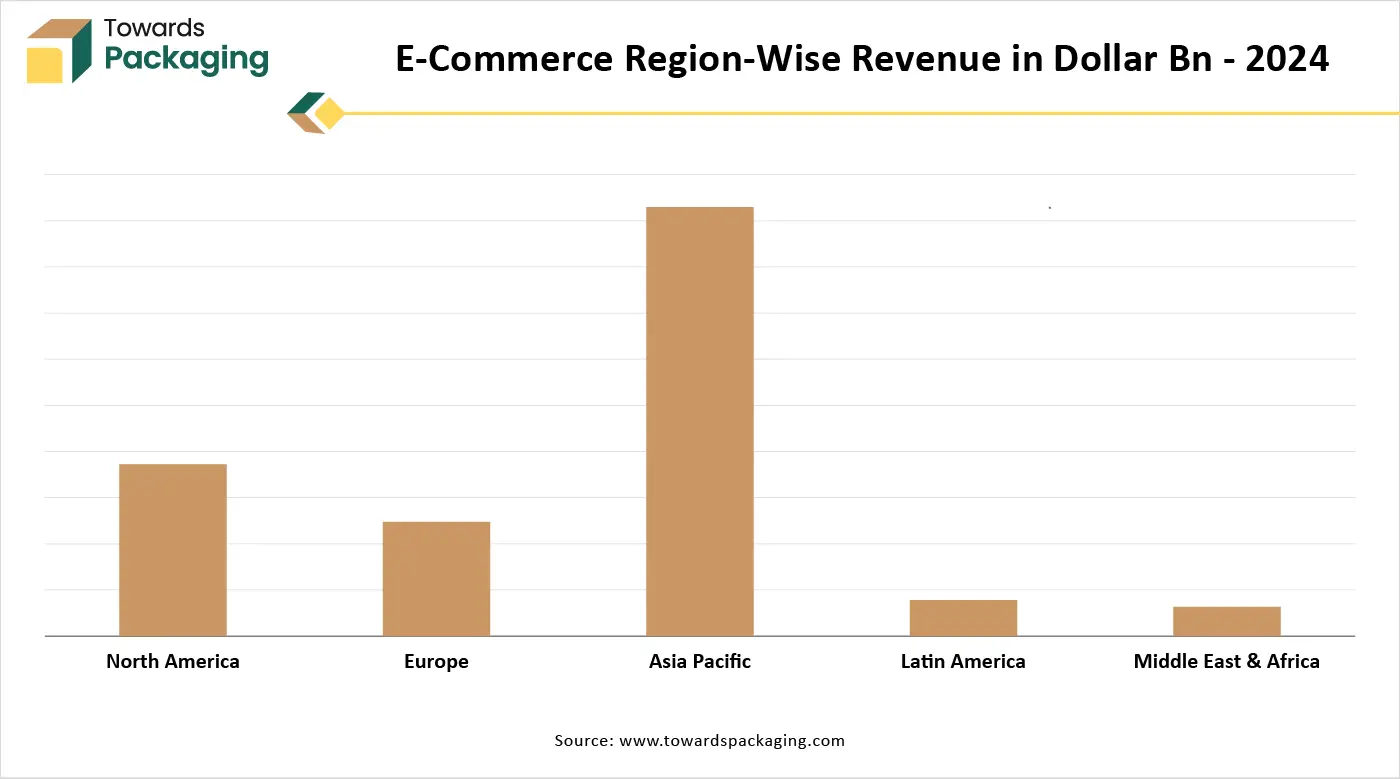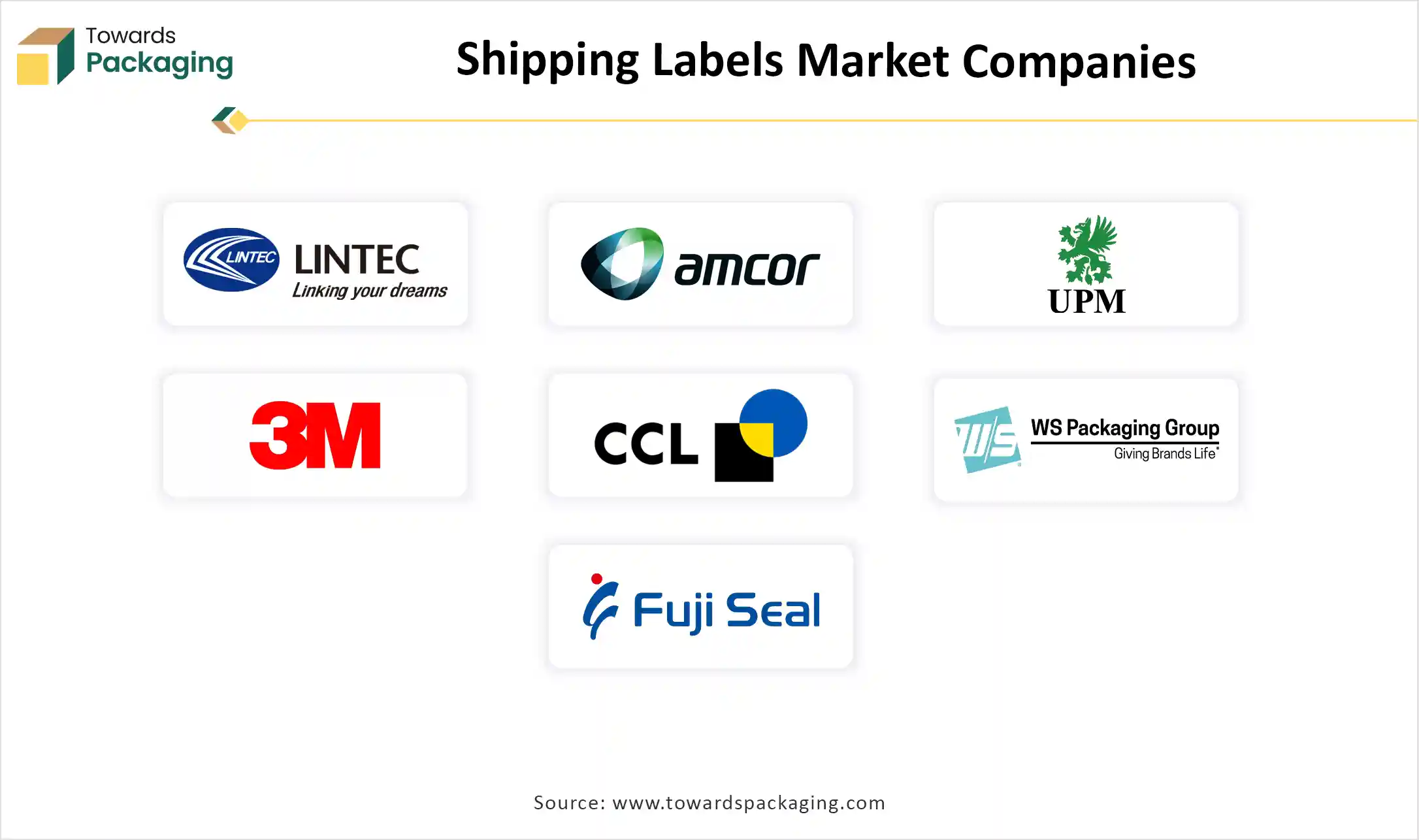April 2025
The shipping labels market is forecasted to expand from USD 2.21 billion in 2025 to USD 2.89 billion by 2034, growing at a CAGR of 3% from 2025 to 2034.

Unlock Infinite Advantages: Subscribe to Annual Membership
The shipping labels market is rapidly rising due to the growth in various sectors such as e-commerce, logistics and supply, healthcare, and pharmaceuticals etc. Technological advancements are taking the industry to the next level. RFID (Radio frequency Identifier), smart labels with QR codes, and NFC (Near Field Communication). These technologies are working in various ways, like with RFID, one can store electronic data, which can be accessed remotely. QR codes are useful in identifying the original product and avoiding counterfeiting. NFC provides better tracking and monitoring of the product throughout the supply chain. All these technologies have changed the traditional shipping labels market, and operations have become more accurate, fast, and transparent due to technological advancements. Rising demand in various industries and technological advancement, this combination is going to drive the shipping labels market in the future.
AI integration in shipping labeling is enhancing customer experience by utilizing various software that creates labels in seconds with features like QR codes, which help in getting information about the shipment quickly. It makes tracking the shipment easy and quick, which creates a smooth experience for the customer. Automation of the process helps in reducing the operating cost by reducing the manual processing.
AI helps to track all the data at one point, and while shipments are on the way, because of QR codes, the shipments get scanned at every checkpoint and send a notification to the consumer about the status of the shipment. E-commerce companies are using this thing on every shipment they have to dispatch. This gives a great consumer experience while maintaining real-time data about the shipment. Technologies like OCR (Optical Character Recognition) are used to fetch external shipment data seamlessly without any manual data entry.
E-commerce platforms are spreading across the globe, and they have to deliver millions of products to the customers' locations. To complete this operation, the accuracy of the shipping labels must be paramount. Implementation of smart labels and modern technological advancements is inevitable to perform such huge-scale operations effectively. Smart labels make sure that the right product has reached the right person. This sophistication in the labeling makes the shipping operations very smooth and reduces the inaccuracy in shipping operations.

Due to rising environmental concerns worldwide, governments are imposing stringent regulations and pushing the shipping labels industry towards the use of eco-friendly materials. Biodegradable and recyclable materials are in demand due to these constraints announced by the government bodies worldwide. Techniques where the minimal use of ink and adhesives are also used to reduce the environmental strain. Organic inks and water-based adhesives are becoming popular choices in the market. one of the creative solutions that is heavily being implemented by the industry is thermal printing, where heat is used for printing instead of ink on heat-sensitive papers, which completely discards the need for ink and helps reduce environmental damage caused by hazardous chemicals used during the production and use of the ink in the printing procedure.
Wash-off labels are also gaining popularity in the shipping labels market, specifically where the shipping containers are returnable, so that the ink can be wiped out and labels are ready for reuse. Smart labels use an electronic way of storing data, which creates no waste material after use. This is one of the most convenient, effective, and environmentally sustainable shipping labeling solutions currently available in the market.
The plastic segment led the shipping labels market due to various reasons, such as it is the most widely available material at a very low cost. It is a highly durable and lightweight material with very high printability. New innovative solutions are coming to the market for plastic recyclability and biodegradable plastic solutions, which are derived from plants or corn starch. For specific labeling purposes, specialty papers are being used heavily in the market.
They are designed for specific purposes, with unique properties like water resistance and high durability. They come with specific coatings and lamination for achieving their properties. Foil is the category that typically uses aluminum foils due to their durability. It is usually stamped on the label surface using hot foil stamping or cold foil stamping.
Pressure sensitive labels segment led the market with the largest share in 2024. Pressure-sensitive labels are driving the market due to their ease of use, durability, various use cases, and cost-effectiveness. various material pressure sensitive labels are available in the market, such as plastic, paper, foil, etc.
The massive growth of e-commerce platforms is creating the shipping and transport requirement on a large scale. Pressure-sensitive labels are also known as self-adhesive labels, as they can be placed on the shipment by just a light application of pressure. Shrink labels, stretch labels, and wet glue labels are the other types used in the market for specific purposes.
Non-adhesive-based labels are used regularly for repositionable labeling on a large scale. Glue-applied labels are very popular in the food and beverage industry as they show durability even in moist conditions. In plastic packaging, the in-mold labels are very popular due to their high durability. Sleeve labels offer a unique feature of 360-degree coverage, which helps brands for effective brand labeling. For very high durability in areas like logistics and wear housing, the adhesive-based permanent labels are applied as they serve the long-term application where the label must stay intact for a long duration.
On the other hand, the removable labels are used in the temporary application, such as pricing and promotions. All these various categorizations allow the operators to select labeling based on their requirements.
Digitally printed labels segment dominated the market in 2024, as they have made things very simple and easy compared to the technologies used earlier. It has reduced the human error element as the labels are being printed digitally, and the name and address are printed as per the name in the system, which discards the possibility of human error. Every individual label can be customized with digitally printed labels, unlike the previous technology. Thermal printed labels are also becoming very popular in the market due to their inkless technology, which is being appreciated for its sustainable labeling solutions on a global level.
For high-quality labeling, lithographic printed labels are being preferred in many applications for premium branding. Flexographic printed labels are highly popular due to their high-volume cost-effectiveness and vibrant printing quality. It is used by various materials such as papers, film, and foil. To sum up, digitally printed labels have changed the market scenario completely, offering various benefits, and this is making it the dominating category in the technology segment.
The food and beverages segment dominates the application segment due to many reasons, like increased demand for packaged food items, the rise of e-commerce and instant food delivery applications, and government compliance for providing detailed information about the packaged food item on the label. These reasons are creating a huge demand for shipping labels in the food and beverages segment.
Pharmaceutical shipments have a very crucial requirement for sophisticated labeling as they contain highly specialized drugs that need to be labeled properly. Consumer goods or FMCG have a very high requirement for proper labeling for their branding, ingredients information, and other compliance-related text. Chemical automotive and industrial shipments are huge in numbers and need thorough labeling.
The North American Market is dominating the shipping label market due to the vast presence of e-commerce services and a robust shipping and packaging industry. This region is dependent on highly advanced shipping labeling technologies like RFID, QR codes, NFC, etc., for real-time tracking of the shipments and the supply chains. This region is highly focused on the sustainable shipping labels and is proactively working on developing new innovative solutions.
The European market is showing growth in the shipping labels market as the urban population is inclined towards the use of packaged food items, and this is generating growth in the shipping labels market. Pharmaceutical shipping labels are also showing high growth due to increasing demand in the healthcare and pharmaceutical services. Due to stringent regulations imposed by the government, this region is very sensitive about the sustainable shipping labels solutions and is working towards the adoption of recyclable and biodegradable materials.
Due to a massive population and situated with countries like China, which is the manufacturing hub exporting products worldwide with a robust shipping industry, and India with a huge population and a growing ecommerce industry. These factors are rapidly driving the growth of the shipping labels market in the Asia Pacific region. Continuous advancements in labeling technology are the backbone of this growth.
Cost-effective and bulk solutions are highly demanded in the market. New advanced technology, such as QR codes, RFID tags, and NFC tags, is helping to improve the efficiency of shipping operations while reducing the number of errors and creating a better end consumer experience. While focusing on the development and growth, there is a strong focus on the sustainable shipping labels solutions. Recyclable and biodegradable labeling materials are highly preferred, and RFID and NFC is also helping in achieving sustainability goals
Latin America, the Middle East, and the African regions are showing a significant growth in the shipping labels market countries like Brazil using sustainable labeling solutions on a large scale. In the Middle East UAE, being a central hub for various transportation and import-export operations worldwide, is generating huge demand for shipping labels solutions. All these regions are actively emphasizing on the implementation of sustainable labeling solutions.

By Material
By Type
By Product
By Technology
By Application
By Region Covered
April 2025
March 2025
February 2025
February 2025